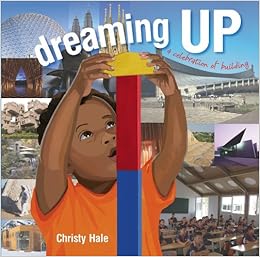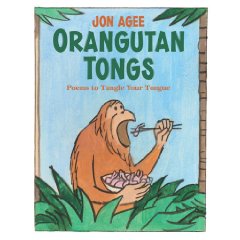While there are several books celebrating libraries, there aren't as many that pay tribute to the librarians who have catalogued and shelved endless volumes over the ages, always knowing where to find what one wants to find in the library, and recommending the right book for the right topic for the right reader. With the digital age, this group of specialists is becoming obsolete and under-appreciated.
So, when we sought out a few books that showcased the dedication and enthusiasm of librarians, we had to share it here. And who did we turn to to help us find these books? You guessed right!
My Librarian is a Camel
How Books Are Brought To Children Around The World
by
Margriet Ruurs
This is one of the top favorite books among this collection for the kids, and me. The author contacted the librarians in various parts of the world to share their favorite stories about their libraries. Some of them even clicked pictures of their mobile libraries and sent it to the author with stories about happy readers, as the smiling faces revealed in their pictures.
From Australia, Azerbaijan, to Thailand and Zimbabwe, 13 countries are showcased here, each with a unique story about mobile libraries. A map at the beginning shows the locations of these countries in the world. Filled with photographs, the books shows real people in real places, passionate about books.
From Truck-libraries in Australia and Azerbaijan, to the Book Boat in Finland (Bokbåt in Swedish and Kirjastovene in Finnish) that shuttles between the rocky islands in the Aboland archipelago; the floating library and the bicycle libraries of Indonesia to the Camel libraries of Kenya; horse-drawn wagon in Mongolia to donkey-cart in Zimbabwe; from converted train carriages of Thailand to four-by-four trucks on rocky mountainous terrain of Papua New Guinea; we read about the dedicated and passionate people who bring books to their readers not minding the trouble.
The book is full of anecdotes that stayed with the children. Like, in Mongolia, The Book Tour, when the mini-bus brings books to the nomadic tribes, is called
Amttai Nom which means "candy books". Children are given food including some sweets before they sit down to read the books and choose a few for them to keep till the next mini-bus visit, when they can exchange books. Mr. Dashdondog, a well-known writer undertaking this task of bringing books to children asks" Which was sweeter: books or candies?" The children always answer, "BOOKS!"
In the Introduction the author says, "Maybe you have been taking your local librarian for granted, just like I did. Next time you borrow books, think of how lucky you are to be able to choose from all those free books and to take home as many as you wish."
[image source:
Boyds Mills Press website]
 Biblioburro
A True Story from Columbia
Biblioburro
A True Story from Columbia
by Jeanette Winter
Waiting for the Biblioburro
by
Monica Brown
illustrations by
John Parra
Both these books tell the story of Luis Soriano Bohorquez, a real-life teacher/librarian in Colombia, who brought books on a burro to the children in the remote regions.
Jeanette Winter is a master at writing & illustrating biographies.
My Name is Georgia still charms us every time we read it. Biblioburro unfolds the story in a gentle and simple manner, telling it as it is. Luis makes the arduous journey with his burros Alfa and Beto, and reads to the children and then lets them choose books to keep until his next trip when they get to exchange them for new ones.
Waiting for Biblioburro adds some fun elements that captivated the kids at home. For one thing, the girl in the book is called Ana, a name my daughter goes by. Ana, in the story, has read her book, her only book, a zillion times and knows it by-heart. Being a rural community with each family member chipping in with the tasks, books are not a top priority. But, Ana wishes she could sit with her books all day long.
It is Ana's dream-come-true when Luis arrives with his burros, Alfa and Beto, bearing books. After waiting for a long time for the Biblioburro to reappear, Ana writes her own
cuento (story). Finally when the Biblioburro arrives, she hands it to Luis who reads it to the children under the tree. This book is peppered with Spanish words which we liked. The Glossary at the back helped.
[image sources:
Simon & Schuster,
John Parra website]
The Librarian of Basra
A True Story from Iraq
written & illustrated by
Jeanette Winter
Alia Muhammed Baker is the librarian of Basra. Anticipating the devastation that will follow the military maneuvers in the area, and fearing the loss of all the excellent library books, she starts to take action - first through proper channels, appealing for assistance to transport the books to a safe area.
Not succeeding in that approach, she decides to take matters into her own hands. She carries books by the car-load to her house to keep them safe, small batches at a time. Till one day, it becomes clear that the library had become a war zone and something needed to be done immediately.
With the help of her neighbor, a restaurateur, she manages to save thousands of books from burning down with the library building. She is still waiting for the rebuilding of the library so she can safely return the books to the shelves.
[image source: amazon.com]
Librarian on the Roof: A True Story

by
M.G.King
illustrated by
Stephen Gilpin
RoseAleta Laurell wanted everyone to come to the
Dr. Eugene Clark library and use it. That's what it's there for. She especially wanted the library to serve the needs of her rural bilingual community. But that was proving hard. So, she decided to jump into action.
In an effort to raise awareness and money, she camped up on the roof of the library, saying she'll come down when the target amount is raised.
Needless to say, it attracted great attention among the newsfolk and eventually raised more than the target amount. RoseAleta came down from the roof after a week of weathering it out, happy that her gimmick worked.
[image source:
Albert Whitman & Co.]
That Book Woman
by
Heather Henson
illustrated by
David Small
Cal doesn't care much for books. What good are they when he needs to plow the field and fetch the sheep when they wander and bring the cows home in the evening. His sister Lark, however, cannot do anything but read, absorbed in it all day long if Mother would let her.
The story is inspired by the Pack Horse Librarians known as "Book Women" in the Appalachian Mountains of Kentucky. These brave women were commissioned to bring books to the remote regions where no schools or libraries existed. Traveling by horse or mule, the book women would make the same arduous journey every two weeks - even in bad weather - simply to bring books to the families in that region.
The book was a bit of a difficult read initially as it is written in an Appalachian dialect.
"My folks and me - we live way up as up can get. So high we hardly sight a soul - 'cept hawks a-winging in the sky and critters hid among the trees."
Thus starts the book and continues to tell the story of how one Book Woman made Cal a reader over time. It is heart-warming at the end, and possibly might interest older readers for the challenge it provides with the language.
[image source:
David Small website]
[
An interview with author Heather Henson]
Miss Dorothy and Her Book Mobile
by
Gloria Houston
illustrated by
Susan Condie Lamb
The author shares that Dorothy Thomas was one of her heroes as a child, bringing books in her green van to the children in that rural area, even to the school, as there was no library there at that time.
Dorothy wanted to be a real librarian in a brick building. She loved books. So, she studied to become a librarian. But, circumstances arranged themselves to put her in the midst of Blue Ridge Mountains of North Carolina with her husband, where the neighbors were miles away and there was no library that needed a librarian. But, Dorothy found a way.
Through community meetings and donations, she got a van, and went around checking out books to the interested reader and sustaining the love of reading in that community. Finally, a reader donated a little white house to serve as the library and Dorothy got to work getting it arranged and ready for use.
[
Browse Inside at Harper Collins]
[image source:
Harper Collins website]
Fiction:
 Miss Brooks Loves Books (and I don't)
Miss Brooks Loves Books (and I don't)
by
Barbara Bottner
illustrated by
Michael Emberley
Missy is not interested in books. So she thinks. Her librarian Miss Brooks thinks that Missy just hasn't yet found the kind of book she loves. Missy wonders why Miss Brooks wears costumes when she reads books to the kids, all year long.
And then comes a truly terrifying week in May: Book Week! Each child has to pick a book and read it and make an appropriate costume and read the book/tell the story in class.
Missy does not want to participate. She dismisses all the books suggested by Miss Brooks. Until... there's a book about warts, an ogre with warts, slimy yucky ogre with warts and hairs on his nose. Missy is hooked!
Her mother helps make an ogre costume for the big day; Missy brings stick-on warts for the whole class; and she reads the book aloud with great pleasure, punctuated by snorts.
Finding the right material that interests her is what got Missy addicted to books. Which is true for most kids. The gentle story brings out that fact while celebrating the librarian who persisted and helped.
[
Look Inside the book at Random House]
[image source:
Random House (Knopf) website]
The Boy Who Was Raised By Librarians

by
Carla Morris
illustrated by
Brad Sneed
While not my top favorite (or kids' for that matter), the book again celebrates three librarians who helped Melvin learn as much as he wanted, from first grade till he graduated high school and moved on. And, the book ends with Melvin coming back to help other kids feel the same connection with the library and the librarians.
With no mention of Melvin's family or other influences, this book directs a warm gratitude to the librarians who seem to have been instrumental in satisfying Melvin's thirst for knowledge.
[image source:
Peach Tree Publishers]
Shared here already:
Librarian Who Measured the Earth


















